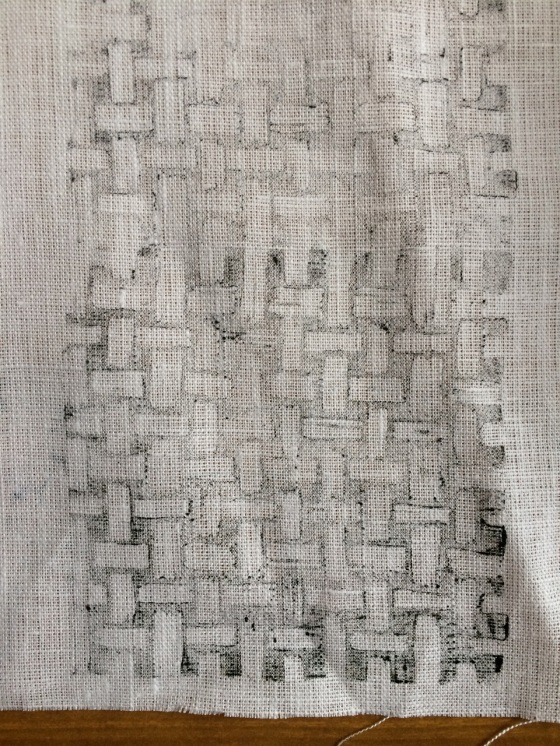After Alice and I made our bird and leaf lino cuts for the William Morris Society earlier this year, I figured my next printing project would have to be even more elaborate and ambitious, because, well, I’m competitive with myself. But a crafty night in with my flatmate, a roll of brown paper, a potato, craft knife and some gouache paint has reminded me how satisfying the simpler projects can be.
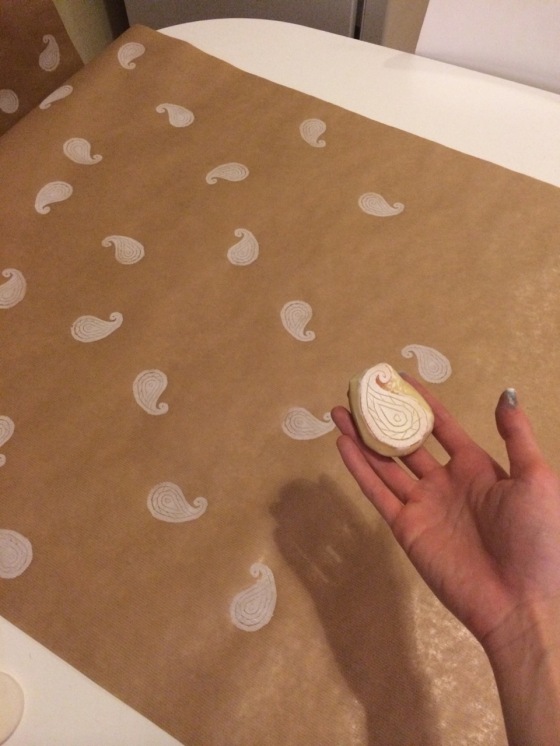
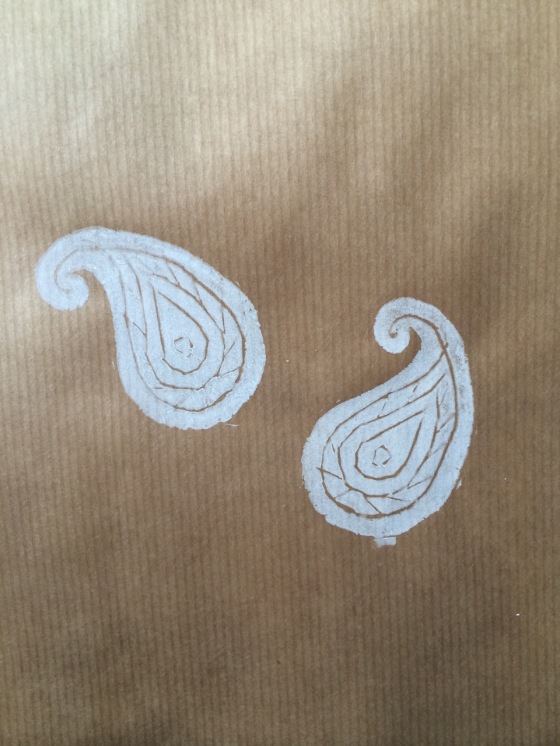 I cut out a very simple paisley design and printed the whole roll of paper with white footprints. I went to bed feeling just a little bit smudged. The next morning I added some colour, picking combinations from a very lovely library book on Central Asian Textiles (perhaps Indian or Scottish textiles would have been more appropriate, but this eye-popping blaze is just what I wanted and had to hand).
I cut out a very simple paisley design and printed the whole roll of paper with white footprints. I went to bed feeling just a little bit smudged. The next morning I added some colour, picking combinations from a very lovely library book on Central Asian Textiles (perhaps Indian or Scottish textiles would have been more appropriate, but this eye-popping blaze is just what I wanted and had to hand). 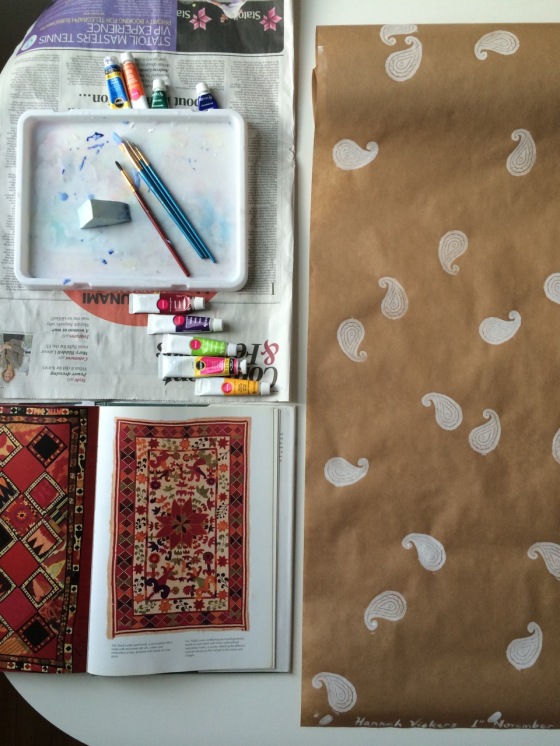


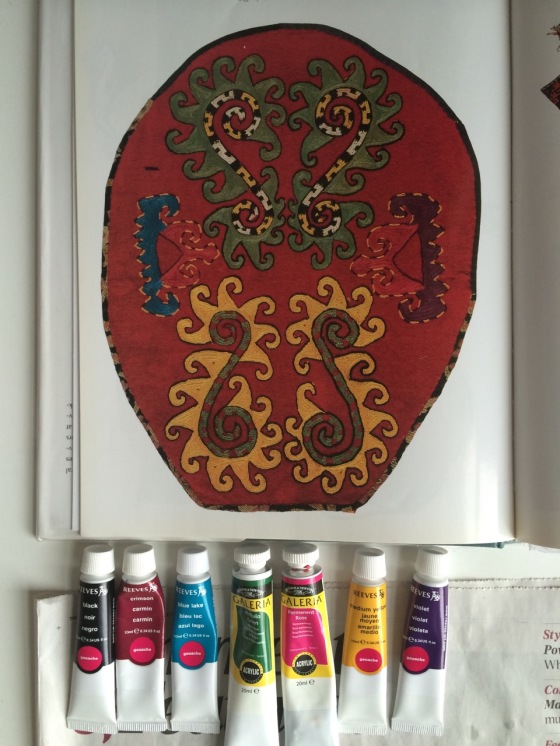


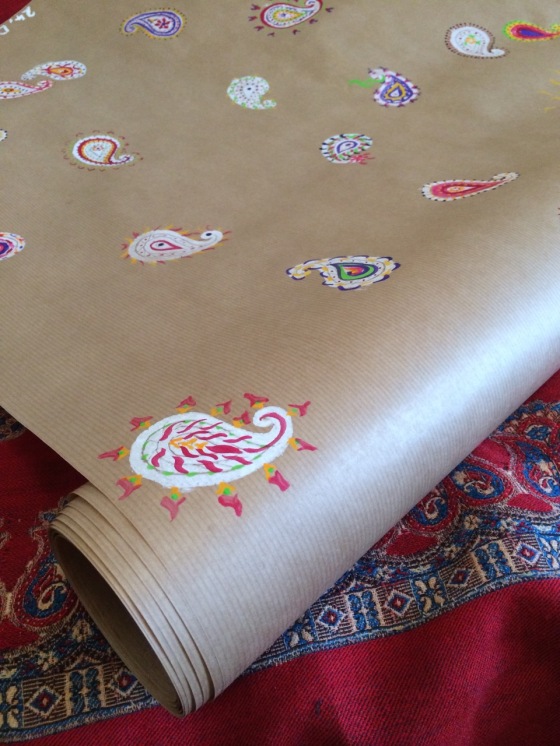
I was inspired to use a paisley design by what I’ve recently learnt about the history of the Scottish textile industry, and its surprising international connections. Paisley is a town in West Scotland which became so well known in the nineteenth century for its reproductions of imported Indian shawls that the motif (also known as boteh) became synonymous with the town.
At Glasgow University some interesting research is uncovering various aspects of the Scottish Textile Industry. Below are links to current research projects:
 ReCREATE – a network of specialists and academics researching Scotland’s textile industry during the Industrial Revolution. Talks at an event of its forerunner ReINVENT are available to view here.
ReCREATE – a network of specialists and academics researching Scotland’s textile industry during the Industrial Revolution. Talks at an event of its forerunner ReINVENT are available to view here.
Glasgow Dyes Project – Julie Wertz’s PhD project to research and recreate the brilliant ‘turkey red’ dye used by Scottish dyers. She’s also written a post about her research here on the Centre for Textile Conservation and Technical Art History blog.
Darning Scotland’s Textile Heritage – the University of Glasgow archive’s project to enhance their collection of records relating to the Scottish textile industry.


 As a (freelance) teacher of Art and English, I’m always trying to think up new projects and ideas for lessons. Most of the time I try to take the lessons outside to parks, museums and galleries, where we can draw from observation and learn about art first-hand.
As a (freelance) teacher of Art and English, I’m always trying to think up new projects and ideas for lessons. Most of the time I try to take the lessons outside to parks, museums and galleries, where we can draw from observation and learn about art first-hand.
 The fabric is medium-weight Belarusian linen, bought on one of my trips to Donetsk. I stitched the tea towels on my trusty 1956 Singer machine, printed, ironed, washed and ironed them again to make sure the colour stayed fast.
The fabric is medium-weight Belarusian linen, bought on one of my trips to Donetsk. I stitched the tea towels on my trusty 1956 Singer machine, printed, ironed, washed and ironed them again to make sure the colour stayed fast. 

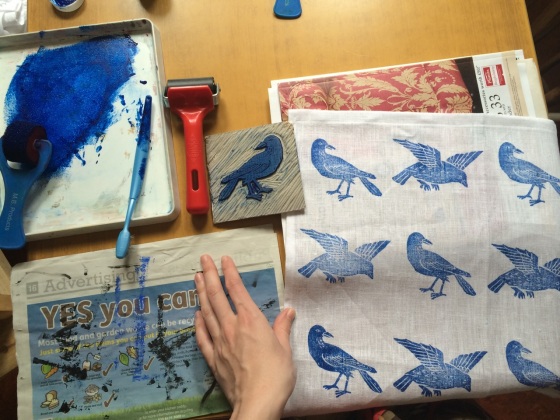


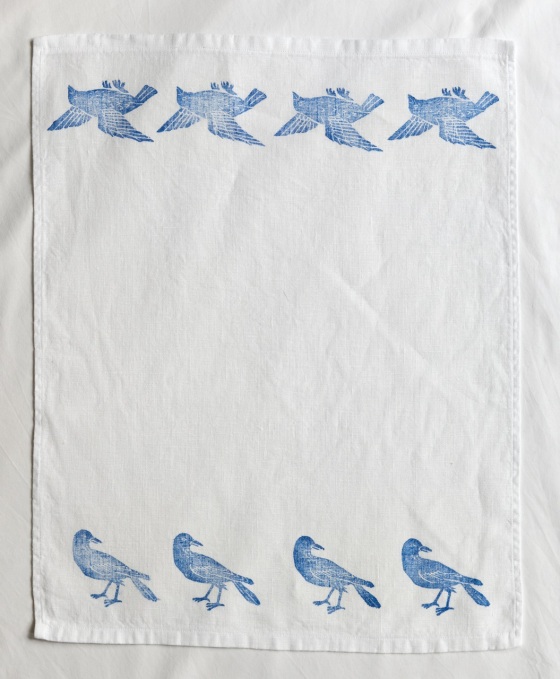










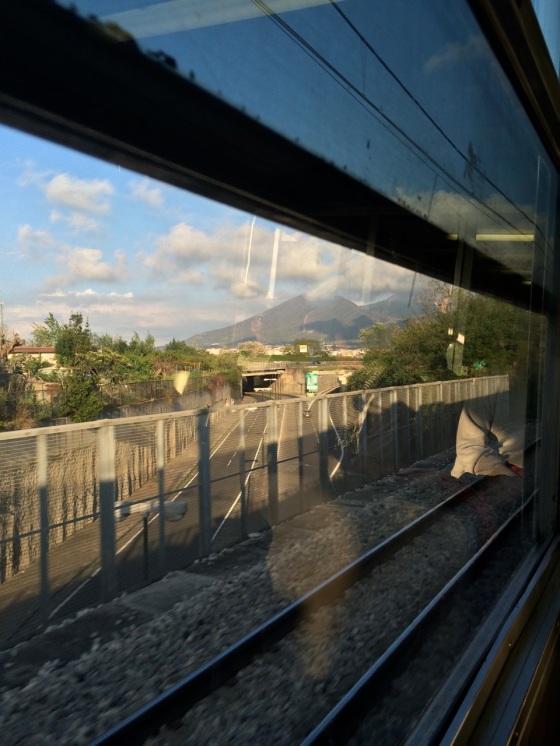 On the train back from Pompeii, Sayed and I listened to PJ Harvey’s ‘This is Love’ on headphones, restraining ourselves from leaping around the carriage and nearly imploding in the process as we passed Vesuvius, which I was convinced was about to erupt. If any song could make a volcano erupt, it would be this one.
On the train back from Pompeii, Sayed and I listened to PJ Harvey’s ‘This is Love’ on headphones, restraining ourselves from leaping around the carriage and nearly imploding in the process as we passed Vesuvius, which I was convinced was about to erupt. If any song could make a volcano erupt, it would be this one. I had the privilege of taking a good look (and some bad photos) of the two original designs, both housed in the Society’s collection. Bird and Grafton were both made well into Morris’s career as a wallpaper and textile designer. You can see this in his precise and confident drawing of Bird, which contrasts with the rubbings out and alterations apparent in
I had the privilege of taking a good look (and some bad photos) of the two original designs, both housed in the Society’s collection. Bird and Grafton were both made well into Morris’s career as a wallpaper and textile designer. You can see this in his precise and confident drawing of Bird, which contrasts with the rubbings out and alterations apparent in 


 Detail from original design drawing ‘Grafton’ by William Morris
Detail from original design drawing ‘Grafton’ by William Morris …and second lino cutting sessions.
…and second lino cutting sessions. 


